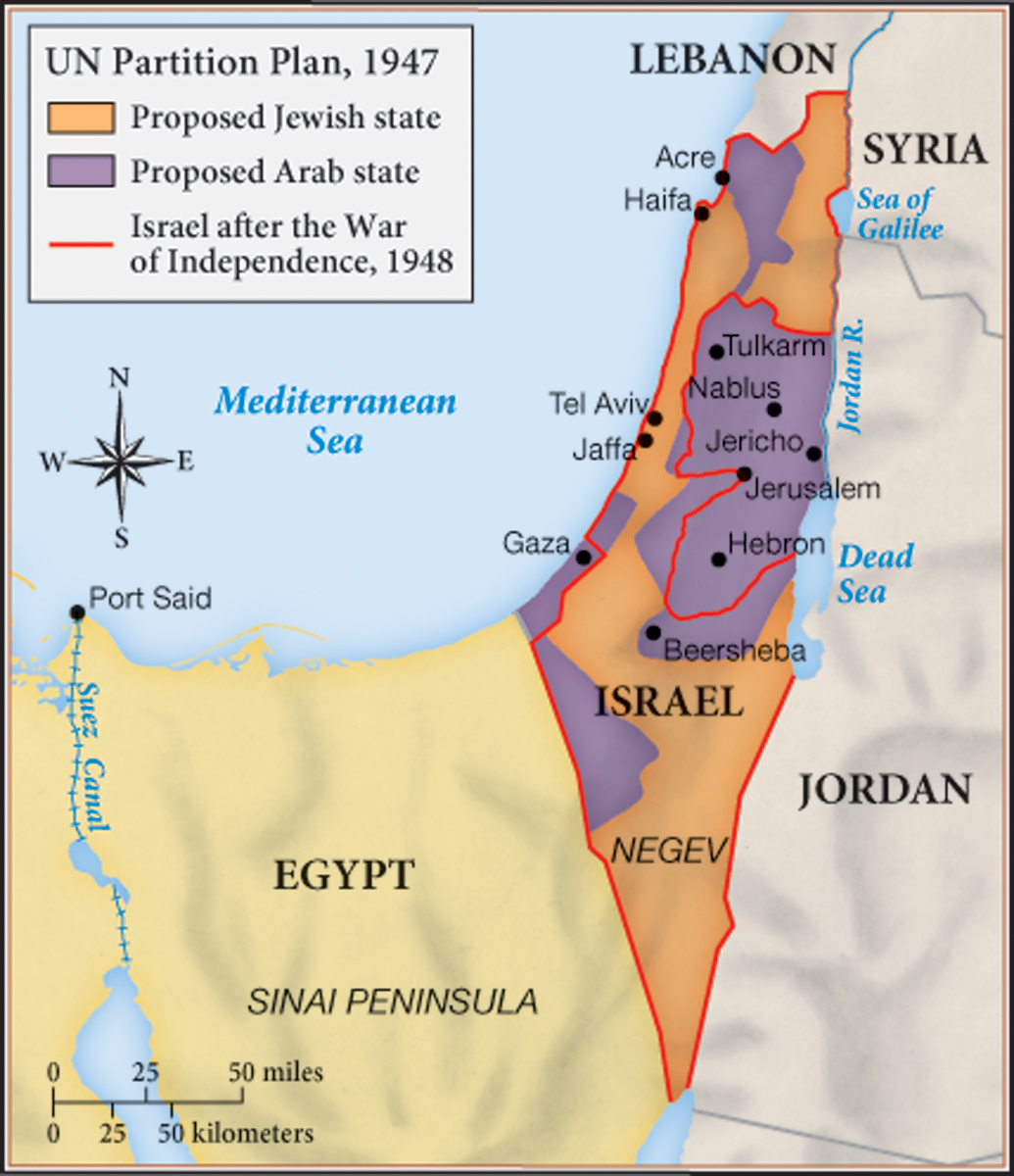The Struggle for Identity in the Middle East
The Struggle for Identity in the Middle East

Independence struggles in the Middle East highlighted the world’s growing need for oil and often showed the ability of small countries to maneuver between the superpowers. As in other regions dominated by the West, Middle Eastern peoples resisted attempts to reimpose imperial control after 1945. Weakened by the war, British oil companies wanted to tighten their grip on profits. By playing the Western countries against one another, however, Middle Eastern leaders gained their independence and simultaneously renegotiated higher payments for drilling rights.

The legacy of the Holocaust complicated the Middle Eastern political scene. Since early in the century Western backing for a Jewish settlement in the Middle East had stirred up Arabs’ determination not to be pushed out of their ancient homeland. When World War II broke out, 600,000 Jewish settlers and twice as many Arabs lived, tensely, in British-controlled Palestine. In 1947, an exhausted Britain ceded Palestine to the newly created United Nations, which voted to partition Palestine into an Arab region and a Jewish one (Map 27.4). Hostility turned to open war, which Jewish military forces won, and on May 14, 1948, the state of Israel came into being. “The dream had come true,” Golda Meir, the future prime minister of Israel, remembered, but “too late to save those who had perished in the Holocaust.” Israel opened its gates to immigrants, pitting its expansionist ambitions against its Arab neighbors.
One of those neighbors, Egypt, gained its independence from Britain at the end of the war. Britain, however, still dominated shipping to Asia through its control of the Suez Canal. In 1952, Colonel Gamal Abdel Nasser (1918–1970) became Egypt’s president on a platform of economic modernization and true national independence—meaning Egyptian control of the canal. In July 1956, Nasser nationalized the canal: “I am speaking in the name of every Egyptian Arab,” he remarked in his speech explaining the takeover, “and in the name of all free countries and of all those who believe in liberty.” Nasser became a heroic figure to Arabs in the region, especially when Britain, supported by Israel and France, attacked Egypt while the Hungarian Revolution (see “Recovery in the East”) was in full swing. The British branded Nasser another Hitler, but the United States, fearing that Egypt would turn to the USSR, made the British back down. Nasser’s triumph inspired confidence that colonized peoples around the world could gain true independence.